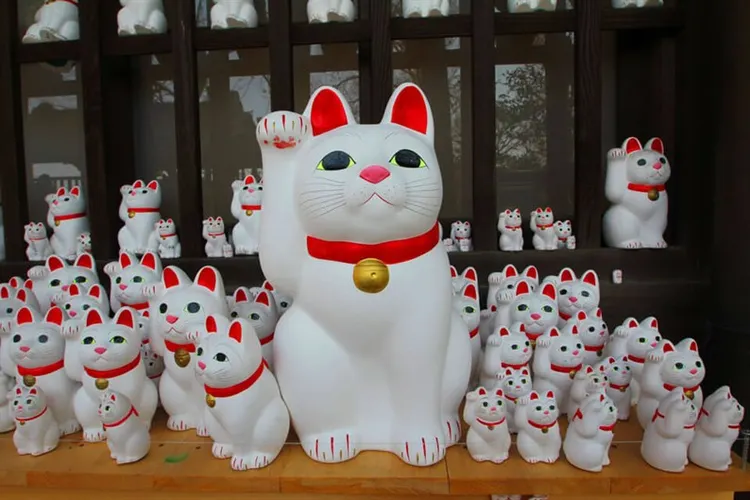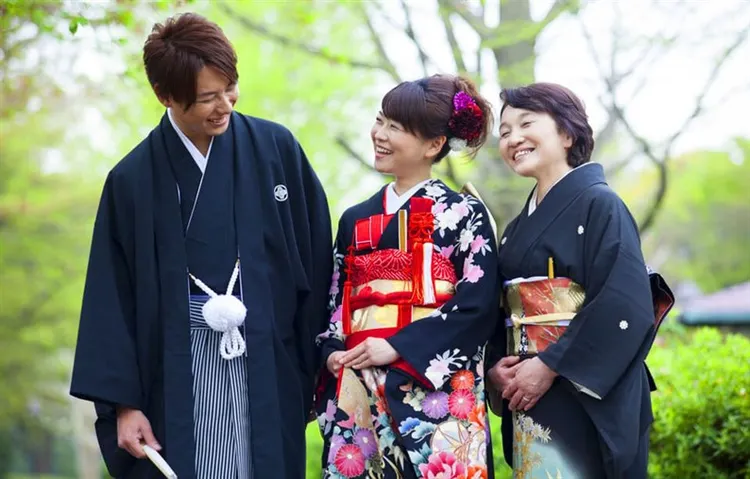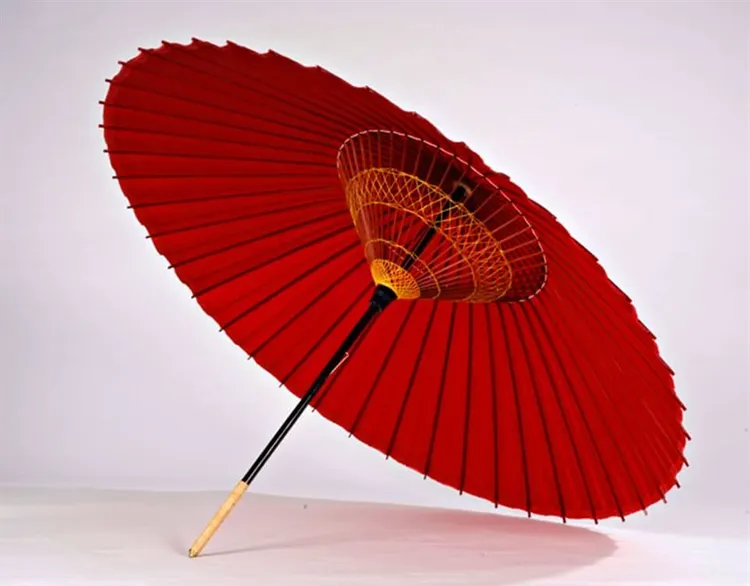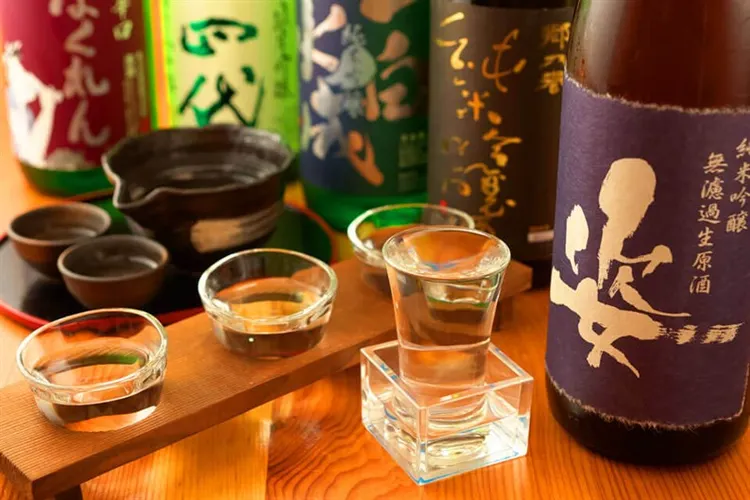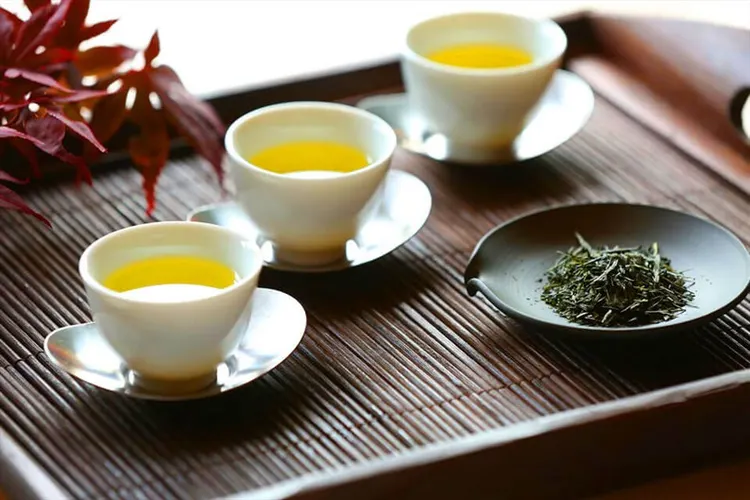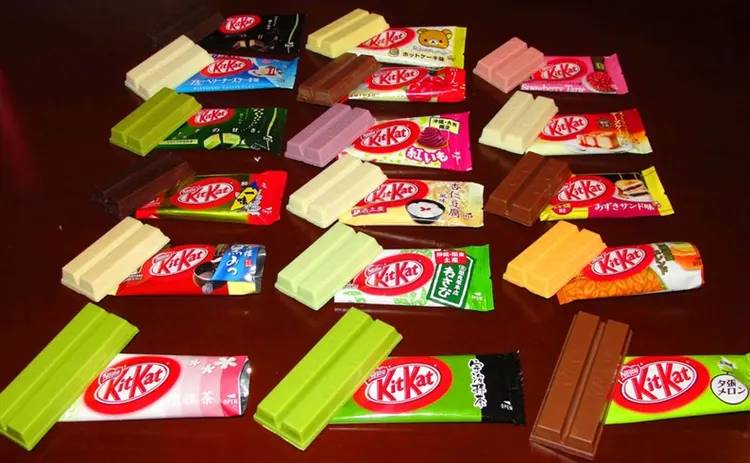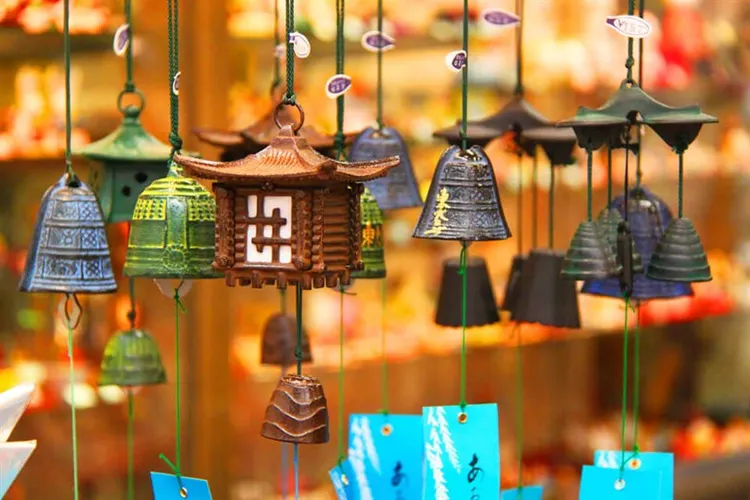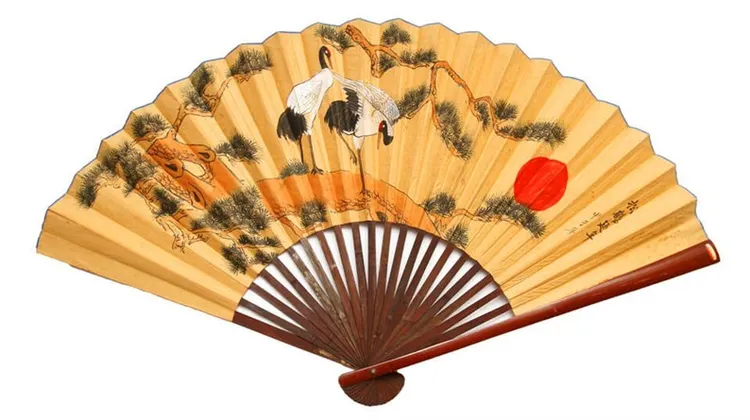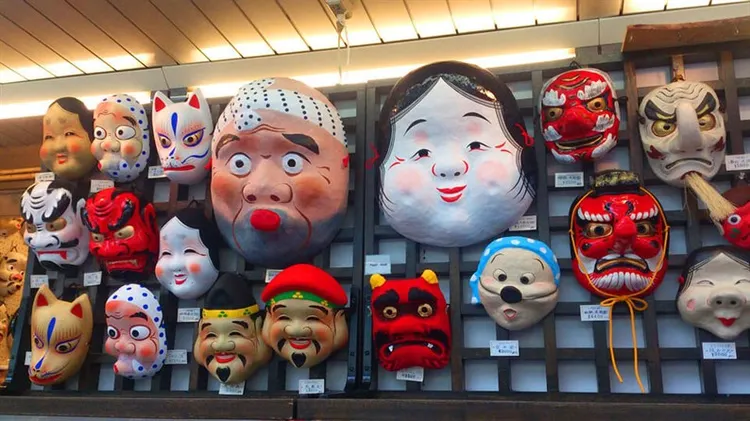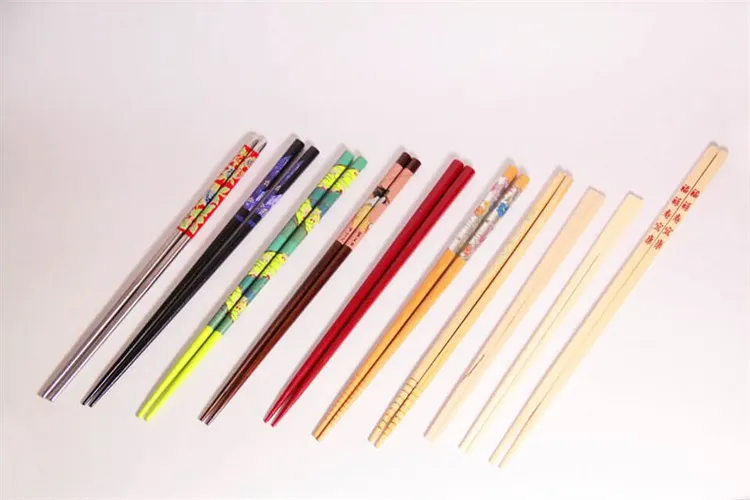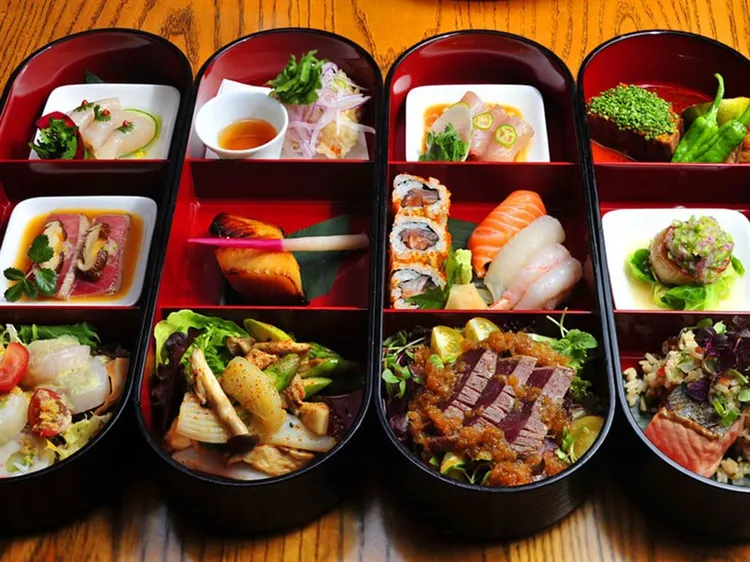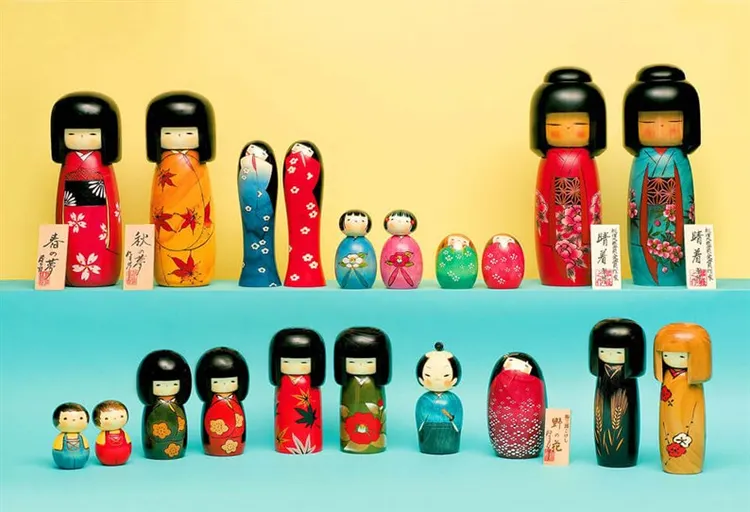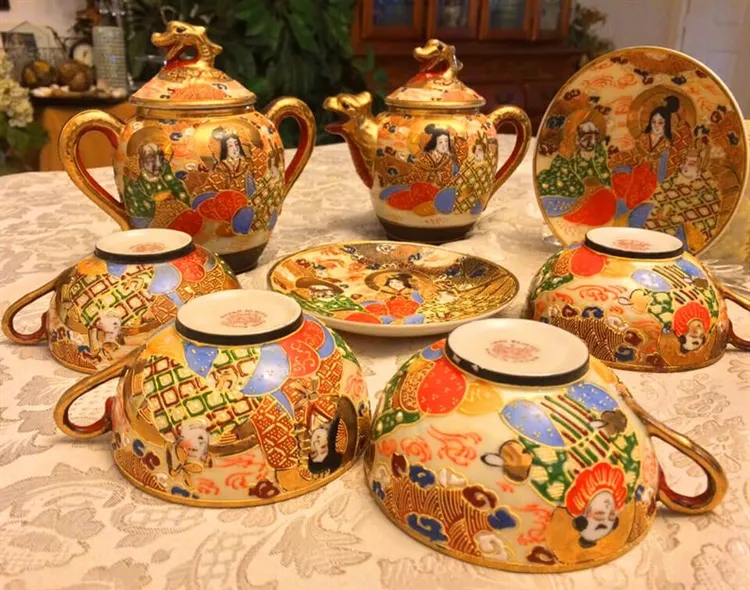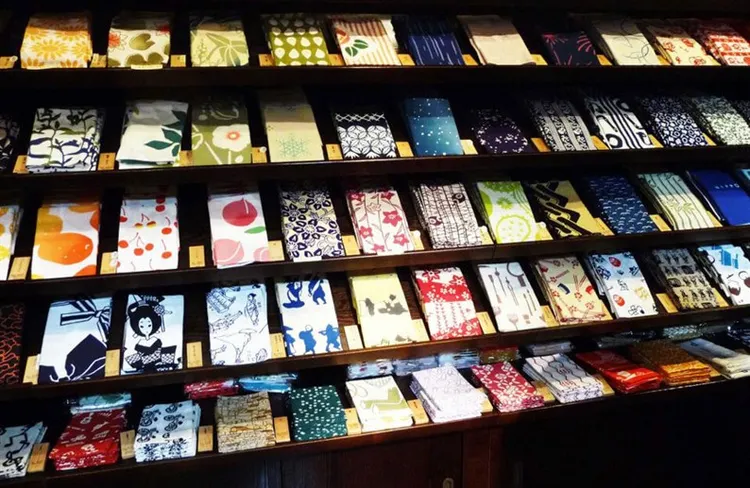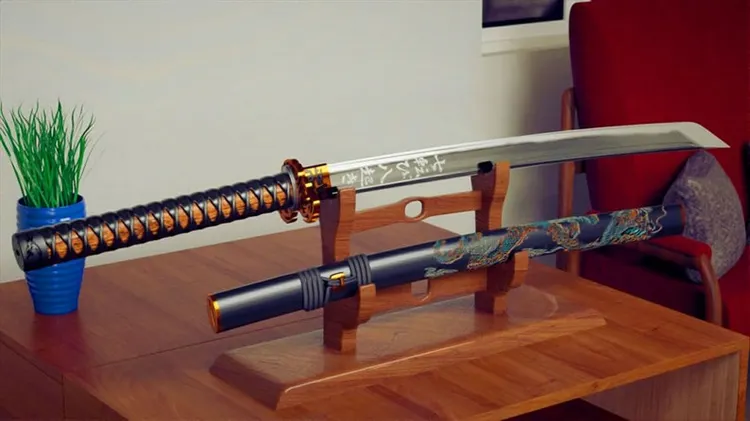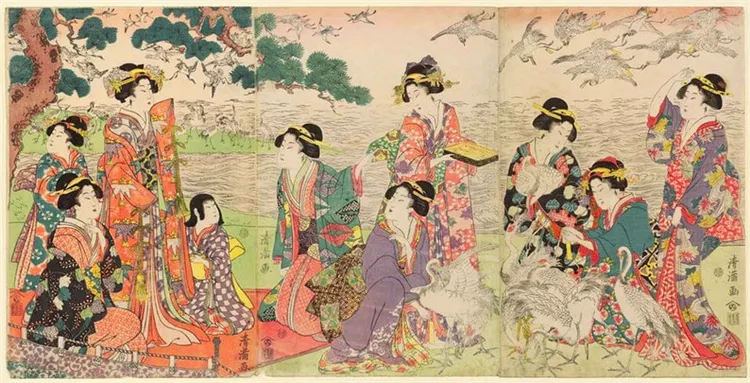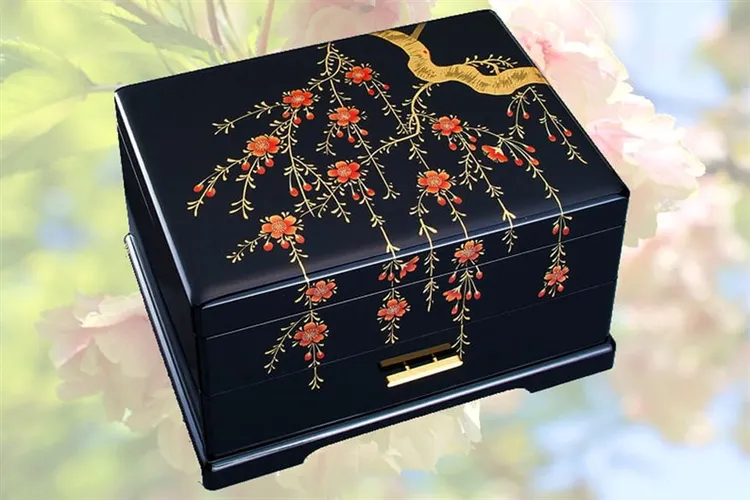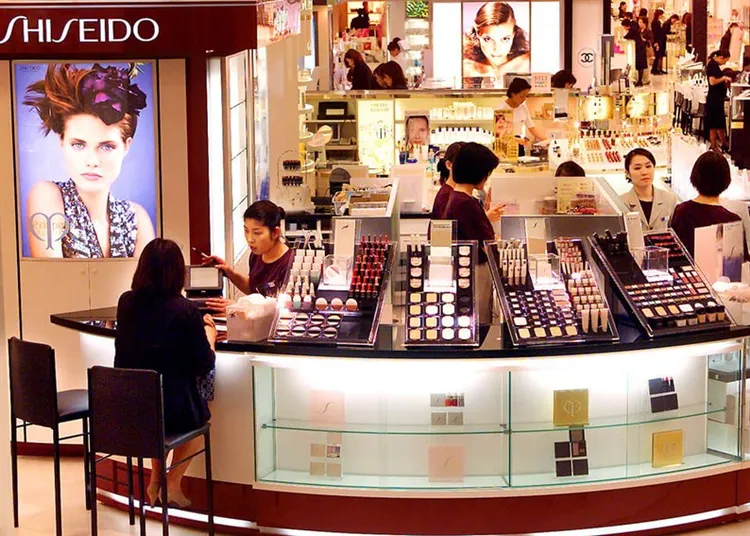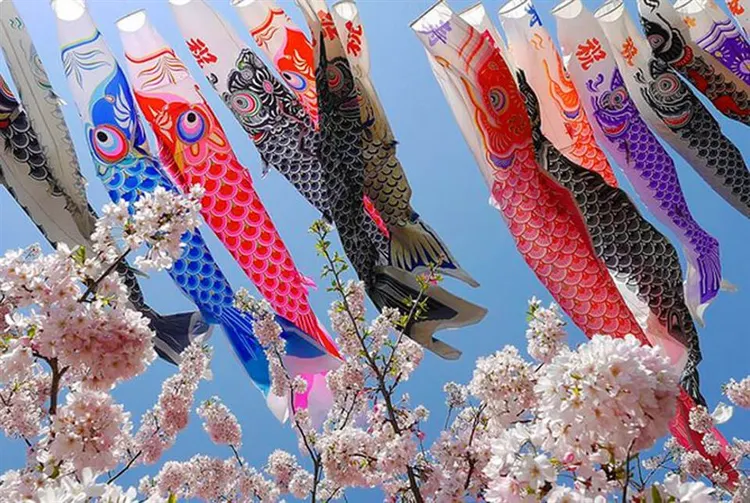What to bring from Japan – 20 best ideas
The Land of the Rising Sun appears exotic and incomprehensible to travelers accustomed to Western standards of life. Literally everything surprises here – from the intricate language to breathtaking landscapes, and from all kinds of souvenirs, eyes run wide. For those who are planning a trip to a mysterious Pacific island and are wondering what to bring as a gift from Japan, we have prepared a list of the most popular and unusual memorable gifts that reflect the originality of an extraordinary region.
Maneki-neko
Walking through the streets of Japanese cities, you will surely pay attention to the Maneki-neko exhibited in the windows of shops and restaurants – good luck charms, whose name is translated from Japanese as “beckoning cat”. Every detail of a funny figure carries a semantic load. So, the raised right paw promises success in business, the left one attracts interesting and profitable acquaintances. Seals with two limbs stretching upwards are acquired to protect the hearth.
The color of the talisman also plays an important role:
Maneki-neko are sold everywhere, filling the shelves of all souvenir shops. The most sacred place for shopping is Tokyo's Gotoku-ji Temple, where the cult of beckoning cats began in the 17th century.
Book a private transfer from the airport to your hotel for 17 638 RUB
Traditional clothes and shoes
The history of the national costume – kimono – has more than 1,500 years. Over the years, its appearance has not changed: as before, this piece of clothing consists of four canvases (“tan”), which are girded with a wide sash (“obi”). The original outfit is sewn from expensive fabrics and painted by hand. The price of such masterpieces is estimated at tens of thousands of yen.
You should not choose a classic kimono as a souvenir, because even Japanese women put it on with difficulty. It would be more correct to purchase a casual summer version of the yukata. It is sewn from inexpensive materials: linen, cotton or satin. Such a purchase is unlikely to empty your wallet. Yes, and finding a yukata will not be a problem: a popular garment is sold in all shopping centers and department stores.
It is ridiculous to wear traditional clothes with familiar shoes, so it would be useful to purchase national shoes. But leave the original geta aside: learning to wear bulky wooden sandals should be done from an early age. It would be much wiser to buy comfortable zori – a Japanese variation of flip flops.
Vagasa
To complete an exotic ensemble of yukata and zori, a traditional vagasa umbrella will help. The homeland of any self-respecting geisha's accessory is China. This exquisite item came to the Land of the Rising Sun in the 6th century. Initially, elegant folding umbrellas were the privilege of the elite, and only two centuries later they became widespread among the people.
The technique of creating a vagas is not complicated, but laborious. Bamboo parts are interconnected with horsehair. A dome of the thinnest paper is attached to the resulting frame, which is then dyed and impregnated with oil. Wooden elements are varnished. As a result of these manipulations, a lightweight and elegant, but at the same time durable and waterproof umbrella is born.
Today, only a few craftsmen in the country have the skills to make a traditional bamboo frame. Therefore, if you decide to buy a real wagasa, go to the city of Gifu, which is located 390 km from Tokyo. Since the middle of the 18th century, local craftsmen have been creating exquisite products by hand, which are considered the standard of Japan's national umbrellas.
Sake
It would be a mistake to call the classic Japanese drink rice vodka or wine. The samurai's favorite alcohol is an original product, which has no analogues in any country in the world. Even the production of sake is unique: only premium varieties of rice are used for its manufacture, which have undergone a mandatory grinding and steaming procedure.
Sake is a tricky drink. Drinking this rice elixir with a strength of 16% is surprisingly easy: you can imperceptibly “persuade” more than one serving. However, the consequences in the form of wadded legs and headaches will not take long. To prevent such an incident from happening to you, follow the unspoken rules for drinking the national potion: pour the drink into tiny bowls (for 2-3 sips), savor it slowly and do not neglect the snack.
When choosing alcohol, be guided by its cost: the price of a solid product starts at 2,000 yen. The hieroglyphs 清酒, which means “natural sake”, flaunting on the label, will also tell about the quality of the drink.
Green tea
Japan is the birthplace of matcha (matcha) – a bright emerald-colored drink obtained from powdered green tea leaves. The best raw materials for making matcha are grown in the vicinity of the city of Uji, where three varieties are presented in every store:
Regardless of the variety, matcha has a high concentration of caffeine, antioxidants (polyphenols) and the amino acid L-theanine, which is responsible for the production of the “happiness hormone” dopamine. According to studies, drinking a traditional drink will not only increase immunity, speed up metabolism, remove toxins and strengthen the circulatory system, but also help in the fight against stress, and also invigorate coffee better!
Sweets
Local delicacies will be an ideal gift for the sweet tooth. Probably, many of you are familiar with KitKat sweets, but only in the Land of the Rising Sun you can find about 250 types of these popular filled bars. Tasting them is like eating Bertie Botts beans: Nestle's Japanese factories produce sweets with unimaginable flavors of green tea, sakura, fried potatoes, peppers, wasabi, pickled plums or soy sauce.
Wagashi also belong to the category of exotic desserts. To create this classic of the confectionery art of the country, which differs from European sweets in a less sweet taste, natural ingredients are used: chestnuts, agar-agar, herbs, rice, tea, sweet potato and legumes.
Fans of sweet pastries should take a closer look at dorayaki or taiyaki pancakes – fish-shaped cookies stuffed with custard or chocolate. And fans of a healthy diet will be attracted by amanatto – sweets, which are nuts, dressed in a “fur coat” of bean paste.
Bell Furin
Total industrialization and advanced technologies coexist perfectly with a deep reverence for the beliefs and traditions of the ancestors. Here, special importance is attached to talismans called omamori. One of these amulets is the Furin bell, whose melodic ringing is designed to protect houses and their inhabitants from negative energy and evil spirits.
Traditionally, furins are made of glass, ceramics, metal and bamboo. A rectangular paper sheet is attached to the tongue, on which wishes or three lines of haiku are written. So that adversity bypasses the house, the Japanese decorate the windows and cornices of their dwellings with bells. In the summer heat, gentle chimes associated with a fresh breeze and a babbling brook create an aura of coolness and comfort.
Every year, in the second half of July, the surroundings of the Kawasaki Daishi Temple (8 km from Tokyo) are filled with the sound of more than 600 bells of various shapes and sizes. The melodic polyphony marks the opening of the popular Furin Festival, which attracts thousands of tourists and locals.
Fan
A fan decorated with an intricate pattern will be a good gift for the fair sex. This invariable companion of geishas and Kabuki theater actors appeared in the country in the 12th century. The first fans (utiva) were a non-folding structure made of a skillfully turned piece of wood covered with silk.
Fans are not only a ladies' privilege. Ogi – a folding fan with a small number of ribs – was considered an exclusively male attribute used in court ceremonies and indicating the rank of its owner. Standing apart is the combat gunsen, made of wood and metal. Such a fan was a full-fledged weapon, with the help of which the soldiers attacked, defended themselves and distracted the attention of the enemy.
Traditional fans are made by hand, using bamboo and special multi-layered paper. And today, fans for the Japanese are something more than just a salvation from the heat and an element of the national costume. Walls in houses are decorated with these accessories, they are collected, given as gifts to relatives and used in marriage ceremonies.
masks
One of the greatest traditions of world theater is the Japanese Noh Theatre. Wooden stages, striking with the deep meaning of the performance, minimalistic music and grandiose costumes – all this almost unchanged has reached contemporaries since the 14th century – the era when father and son Zeami created a new direction of art. The masks, a mandatory attribute of the actors' equipment, have not changed either.
The actors of the “No” theater do not resort to facial expressions and make-up. To express feelings and emotions, they put on masks, the material for which is cypress. Each theater carefully keeps a collection of 150-200 masks. They are divided into male (otoko-men), female (onna-men), and also differ in appearance, character and age.
Today, “But” masks have become popular as popular wall decorations. In souvenir shops you can buy full-size wooden copies or reduced copies made of ceramics, inserted into exquisite frames.
Food sticks
If you don't have much room for gifts in your luggage, get a hashi – Japanese chopsticks, which differ from Chinese ones in shorter length and rounded shape. In the Land of the Rising Sun, you will find many shops that specialize only in selling this accessory. The range is huge: from the simplest disposable to decorated with a pattern and varnished wooden masterpieces.
The Japanese use traditional cutlery for more than just tasting rice or noodles. Sushi is wrapped with chopsticks, bones are selected, fish are cut, soups and sauces are mixed. Hasi are an exclusively personal item, it is considered a bad omen to pass them on even to close people.
Chopsticks are a multifunctional souvenir. They are given not only to fans of Asian cuisine. According to legend, khasi promise their owner longevity and good luck. Sticks painted with oriental patterns can also be presented to newlyweds with the wish to be inseparable like a pair of hashi.
Lunch boxes Bento
The term “bento” refers to food packaged in a beautiful container. In local stores you will find hundreds of variations of this useful accessory. The choice is wide: from simple plastic boxes to airtight lunch boxes equipped with a cooling element or oval wappa bento with antibacterial properties.
The bento culture in the country is extremely developed. There are special books devoted to the art of harmoniously compiling a take-away lunch. Cooking magazines are constantly publishing tips on how to properly combine foods for a balanced and healthy lunch. Here are just a few of them:
Those who do not want to make their own bento buy lunch boxes in supermarkets. The average price is about 542 yen ($5).
Chickens
The attitude to dolls is special. From time immemorial, local residents believed that each of the figurines has unique properties. They were considered the keepers of the hearth, valued and passed on by inheritance. One of these amulet dolls is kokeshi, a figurine devoid of arms and legs with a cylindrical body and a large head.
The history of kokeshi began in 1603 on the island of Honshu. Kijiya carpenters from the Tohoku region, who made a living by making dishes, invented a new source of income. They began carving cute figures out of wood, hand-painting them, and then selling them as talismans to wealthy gentlemen relaxing in the hot springs nearby.
Today, dolls are turned on a lathe. The figurines cannot boast of a wealth of colors and patterns: the decorative elements are extremely modest, and the palette of shades is limited to red, yellow, black and green. However, this does not prevent kokeshi from being a welcome gift. Dolls are given as a sign of love, sympathy and sincere friendship. It is believed that such a present brings prosperity, good luck in business and harmony in the soul.
Porcelain
Interest in porcelain products originated in the country in the XIV century due to trade with China. At that time, exquisite fragile little things were the privilege of the powerful of this world: the emperor and his entourage. The country's own porcelain industry began to develop two centuries later, after the discovery of kaolin deposits on the island of Kyushu.
The art of porcelain making has been brought to perfection. Graceful figurines and refined tableware are resistant to chips, do not absorb odors, and can tolerate both high and low temperatures. The products are characterized by laconic design, modestly pronounced relief and numerous small details with clear lines. The painting is either extremely minimalistic and unobtrusive, or saturated with images of flowers, birds and fabulous creatures.
To date, the most famous brands are Japonica, Nikko, Keito, Narumi and Noritake. In order not to purchase a fake, when buying, pay attention to the marking: the original products are stamped “Fine Bone China”, which means “fine bone china”.
Tenugui
The Japanese desire for cleanliness is known throughout the world. Residents of the Pacific island never cross the threshold of the house in street shoes, and in all restaurants and cafes, visitors are first served with hand towels – tenugui. These 30cm x 90cm patterned cottons have a long history, first being talked about during the Kofun period (250-538).
Tenugui are amazingly versatile. They can be used to tie your head, wipe your hands, blot up spilled tea, or lay it on your knees when you need to peel fruit that is flowing with juice. But remember: when in Japan, never try to use tenugui as a handkerchief – any local resident will consider this act as savagery.
If you are looking for packaging for a memorable present, feel free to buy tenugui too. By the way, the sellers of many stores are fluent in the technique of folding national towels into dozens of different shapes, forcing the souvenir to play with new colors.
Samurai sword
It is difficult to imagine a better souvenir for a man than a samurai sword. The weapon, bewitching with its forms, which is the spiritual symbol of the Land of the Rising Sun, personifies courage, valor and supreme justice. Buddhists perceive this invariable regalia of ancient warriors as the embodiment of strength, wisdom and divine purity.
The first sword (katana) appeared in Japan at the beginning of the 13th century. Soon, steel blades were canonized, and the craftsmen who made them received a high social status. According to archival data, from ancient times to the middle of the 20th century, only about 2 million swords were produced in the country. Each copy was truly priceless and was passed down by warriors from generation to generation.
Today, authentic samurai swords are of great historical and cultural significance, the cost of relics is estimated at tens of millions of yen. However, in stores you can find good replicas: from souvenir miniatures to full-size copies of katana, made according to the samples of the creations of the best weapon makers of the Middle Ages.
Ukiyo-e prints
In the 17th century, a new art direction, Ukiyo-e, emerged. This style refers to woodcuts, meaning prints on paper or printed graphics on wooden surfaces. Ukiyo-e paintings were not: rectangular prints were considered as mass media and cheap pictures for the townsfolk.
Initially, artists used black and white ink to create Ukiyo-e, and only a century later, the pictures acquired color. Since the main buyers of prints were ordinary citizens, the plots of the images reflected everyday life: beautiful geishas, monumental sumo wrestlers, actors of the Kabuki theater. Later, Fukei-ga (landscapes), Katyo-ga (birds, flowers) and Shunga (canvases of erotic content) appeared.
The art of Ukiyo-e is still popular today. Modern masters apply images not only to engravings. Copies of famous paintings of the past are placed on clothes, dishes, handbags, tenugui, fans and postcards.
Turner paints
If your friend spends all his free time at the easel, he will surely be delighted with Turner paints. Japanese acrylic gouache, named after the English painter William Turner, lays down evenly, dries quickly, does not crumble and has good water resistance. Adhesion is also on top: the paint remarkably “sticks” to any fat-free surface, so not only paper, but also plastic, fabrics, leather, metals, ceramics, wood, stone can serve as a canvas.
Acrylic gouache comes in 221 shades, including velvety pastels, exotic fluorescents, shiny metallics and pearls that glow from within. All colors blend perfectly without clashing with each other.
An artist who prefers more delicate and transparent textures will like professional watercolor. For the production of the 148 shades included in the palette, Turner specialists select persistent and bright pigments without a single hint of haze. Thanks to them, the completed works will delight the creator for a long time with natural and impressive shades that are not threatened by rapid fading.
Music Box
When choosing a gift for friends who know a lot about Asian melodies, pay attention to traditional music boxes that were born more than a century ago in the vicinity of the now popular resort of Hakone. These regions have long been famous for the variety of tree species, and local craftsmen are known for their ability to create real works of art.
The Japanese box is a unique phenomenon. Its shape, size and pattern depend only on the imagination of the author. There are no generally accepted standards: on the shelves of shops you will find square, rectangular, and round products, the covers of which are often painted in the “aizu-nuri” painting technique or decorated with “yosegi” mosaics. Inside the musical representatives of the glorious family of decorative chests, there is a mechanism capable of playing up to 25 melodies.
Each box has its own secret. Opening it means solving a difficult puzzle. To lift the recalcitrant lid, you need to find a cunningly hidden lever or move the moving parts of the recalcitrant “puzzle” in a certain sequence.
Cosmetics
The velvety snow-white skin of Japanese women is the envy of many European women. The beauty secret of Asian charmers lies not only in good genetics and proper nutrition. Residents of the Land of the Rising Sun pay great attention to the choice of skin care products, among which the first place belongs to whitening and moisturizing products.
Tonics, masks, emulsions and creams containing natural ingredients and designed to give the skin a delightful porcelain matte finish are leaders in the cosmetics market in Japan. The most famous manufacturers are Kanebo, Suhada, Yokota Lab, Shiseido, SK-II, Biore. Of the decorative products, it is worth noting the products of the brands Isehan, Shu Uemura, Celvoke.
You can buy cosmetics in specialized departments of shopping centers or pharmacies. You will find the most affordable prices for mass-market goods in Matsumoto Kiyoshi, Daiso or CanDo chain stores. Luxury brands are found only in fashionable department stores.
Koinobori
Koinobori are popping up all over the place as May 5, the Boys' Day, approaches. On this day, parents, wishing their children strength and health, hang flags in the form of carps that look like fabric pipes. The number of colorful banners indicates the number of sons living in the family, and the length indicates their age.
The Japanese revere the carp as a divine animal that can “swim against the current and descend from the waterfall.” By handing this symbol of courage, stamina and nobility to your loved ones, you thereby wish them well-being, success in achieving their goals and career growth.
Small flags are sold in Japanese souvenir shops all year round. The most common and affordable banners are made from inexpensive and durable materials, such as polyester. The cost of hand-painted silk koinobori can reach 43,000 yen (about $400).
When choosing memorable gifts, do not forget about the export restrictions established by law. According to the customs rules, the following are not subject to duty:
It is forbidden to export obscene books, magazines and drawings, narcotic and psychotropic substances, as well as antiques and art objects of cultural value acquired without special permission from the relevant authorities.
